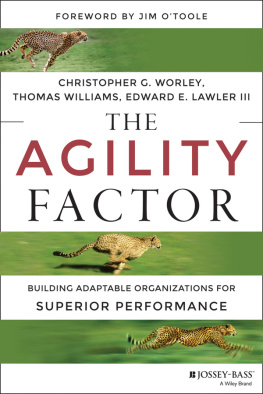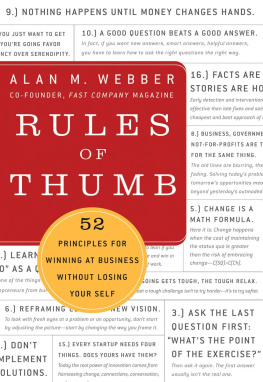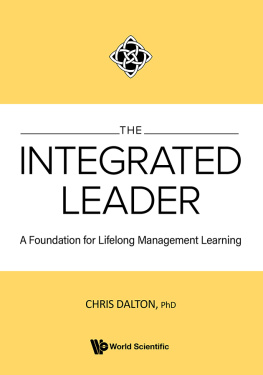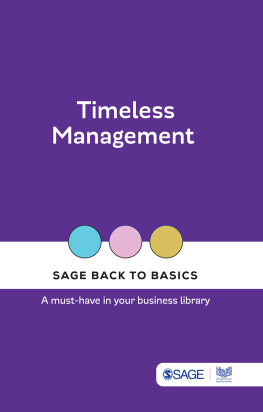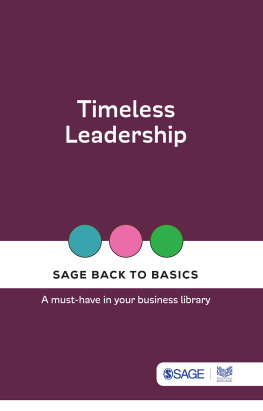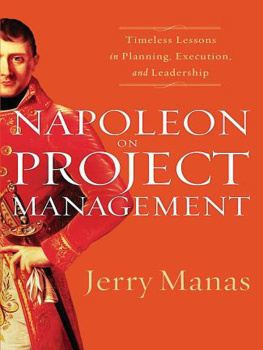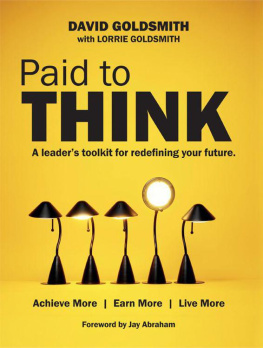
Bloomsbury Business
An imprint of Bloomsbury Publishing Plc
50 Bedford Square | 1385 Broadway |
London WC1B 3DP | New York NY 10018 |
UK | USA |
www.bloomsbury.com
BLOOMSBURY and the Diana logo are trademarks of Bloomsbury Publishing Plc.
This electronic edition published in 2017.
Scott Keller and Mary Meaney, 2017.
Scott Keller and Mary Meaney have asserted their rights under the Copyright, Designs and Patents Act, 1988, to be identified as Authors of this work.
Dilbert 2007 Scott Adams. Distributed by Universal Uclick for UPS. Reprinted with permission. All rights reserved.
All rights reserved.
No part of this publication may be reproduced or transmitted in any form or by any means, electronic or mechanical, including photocopying, recording, or any information storage or retrieval system, without prior permission in writing from the publishers.
No responsibility for loss caused to any individual or organization acting on or refraining from action as a result of the material in this publication can be accepted by Bloomsbury or the authors.
British Library Cataloguing-in-Publication Data.
A catalogue record for this book is available from the British Library.
ISBN: PB: 978-1-4729-4689-8
ePDF: 978-1-4729-4687-4
ePub: 978-1-4729-4688-1
Library of Congress Cataloging-in-Publication Data.
A catalog record for this book is available from the Library of Congress.
Text design: Scrap Labs
Cover design: Downey Drouin
Cover image: Billy Currie Photography, Getty Images Collection
CONTENTS
WHEN SCOTT KELLER wrote and told me that he and Mary Meaney had written a leadership book, and asked if I would write a foreword, my reaction was swift and negative. I was confident that a book by two partners at a fancy consulting firm like McKinsey & Company would be packed with breathless hype about novel ideas and claims that these new, unique, and magical insights had helped their clients perform astounding featsand how these spanking new ideas can enable you and your organization reach the same heights. I was cynical because a discouraging proportion of the 11,000 or so business books published each year claim to have original breakthrough ideas. Unfortunately, most of themin fact, nearly allare reminiscent of how the renowned organizational theorist James G. March answered me when I asked him to list breakthrough academic studies in our field. March said that he couldnt think of any, as the best studies and theories usually frame well-established ideas in useful and simple ways or are well-crafted extensions or blends of existing and established ideas. He added, Most claims of originality are testimony to ignorance and most claims of magic are testimony to hubris.
As I began reading Keller and Meaneys book, I expected the usual boasts of originality and magic. I found none. Instead, as the subtitle says, this book unpacks Ten Timeless Truths that have proven to be crucial to the success of the organizations and leaders that McKinsey & Company has observed and advised since World War II. This is the rare business book that follows Pfeffers Law, which is spelled out in the book I co-authored with Jeffrey Pfeffer, a fellow Professor of mine at Stanford, and on evidence-based management: Instead of being interested in what is new, we ought to be interested in what is true. Yes, the advice here is shaped by the latest (and, especially, the greatest) evidence and experience that the authors could muster. Yet this book is devoted to leadership topics that will be as helpful to leaders today as they would have been forty years ago, and will be forty years from now. Consider the timeless and vexing questions that Keller and Meaney tackle ahead. Leaders in every era have struggled, and will struggle in the future, with questions such as: How do I improve the quality and speed of decision-making? and How do I make culture a competitive advantage? Keller and Meaney not only focus on what is true rather than what is new; they concentrate on the ten topics that are most essential to the enduring success of organizations and their leaders.
I was also taken with the user-friendly structure, content, and prose in this book. Keller and Meaney help the reader by dividing their insights about each of the Ten Timeless Truths into sections on why is this important, what are the big ideas, and how do I make it happen? The content in each section is carefully curated. On topic areas where Ive done workorganizational change, for exampleI am struck by the overhyped nonsense and trivia that the authors have elected to leave out. They zero in on the essentials instead. In the chapter on leading successful transformational change, for example, they dig into the few key lessons that matter mostsuch as how to double the odds of success and the importance of being rational about being irrational. Finally, one of my pet peeves is that business writing and presentations (especially those by academics and consultants) are too often littered with hollow and soul-crushing language. This book has a refreshing absence of what author Polly LaBarre describes as the curse of jargon monoxide.
After I read the book, and fretted about it for a few days, I realized that Kellers and Meaneys Ten Timeless Truths are so easy to digest and so useful because the authors and their colleagues have observed so many leadership successes and failures over the yearsand had so much practice passing what theyve learned to others. Their journey reminded me of Profound Simplicity, a book by psychologist William Schutz that shows understanding evolves through three phases: simplistic, complex, and profoundly simple. I find Leading Organizations: Ten Timeless Truths to be a lovely example of such profound simplicity. I hope you enjoy it as much as I did.
Bob Sutton
January 2017
ROBERT I. SUTTON is a Professor of Management Science at Stanford Engineering School, organizational researcher, and bestselling author. He has written over 100 academic articles and chapters, over 1000 blog posts, and six management booksincluding his most recent, Scaling Up Excellence. He has recently been voted one of the top 10 Leaders in Business by the American Management Association (AMA) and one of 10 B-School All-Stars by BusinessWeek.
Why?
LIKE MOST ORGANIZATIONS today, McKinsey & Company (the firm in which both authors are Senior Partners) is investing heavily in understanding the power of technological advances to help our clients and to enable us to work more efficiently and effectively as an organization. As part of our Digitizing our Firm initiative, weve implemented a relationship management support tool we call ClientLink.
Starting in early 2015, client contact information in all of our partners e-mail address books was automatically cross-referenced with a database of just-released, publically-available business articles from top-tier sources around the world. Based on the company and position of a client executive, the database matched potential articles of interest and sent partners the relevant articles for them to then forward to their clients.
This is a great service both to us as business consultants and to our clients, as it means we all have timely access to cutting-edge, relevant information across myriad sources we couldnt possibly curate ourselves.


